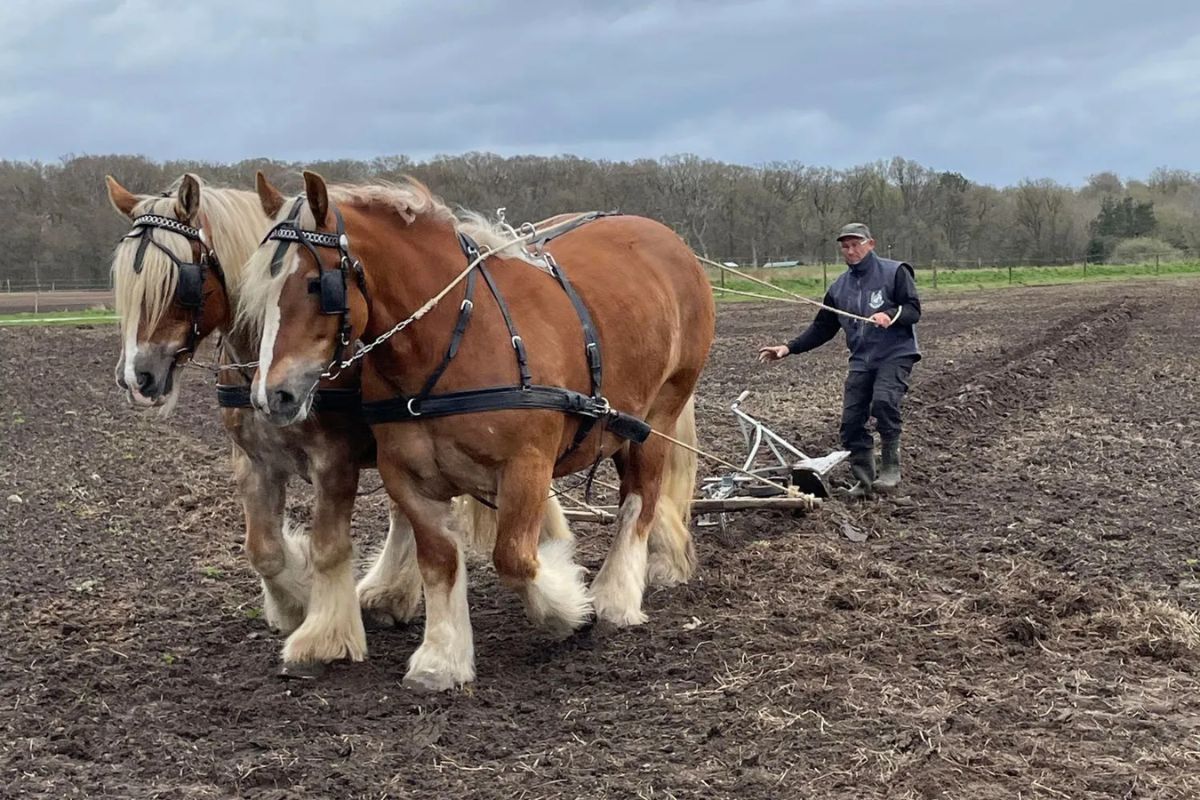Menu

In an era where more and more spirited sport horses are bred, this breed, however, is cultivated to remain a robust and medium-sized draught horse. The Jutland horse (also spelled Jutish horse, Ed.) originating from the peninsula of Jutland in Denmark comes from a stock of native agricultural horses that were previously used as warhorses.
Its ancestors can be traced back to the 12th century, while there are images of Danish warriors on horses from the 9th century that resemble the Jutland horse.
Before the 19th century, bulls were used to pull the plough in farming, and horses were used for riding and transportation. When horses began to make headway in farming, it was thanks to the development of harnesses. The Jutland horse was built for the task with its calmness and strength. It could easily pull a plough, drive a cart, and be ridden.
The road to the grand, magnificent working horse we know today was not easy. In the 18th century, the attempt to crossbreed the native ancestors and Frederiksborg horses failed. The offspring were not strong enough for the demanding agricultural work in the fields. Later, about 50 Yorkshire horses were introduced to improve the stock of Jutland horses, and this initially went well. Unfortunately, the success was short-lived as the positive traits were not passed down in subsequent generations.
Read also: Aegidienberger: The perfect blend
At this point, it was realised that the experiment of introducing other breeds had failed. The few remaining purebred Jutland horses became the focus of a government-sponsored conservation project. This led in 1862 to crossbreeding with an English Suffolk stallion, and this red horse contributed so much to the breed that the project was successful.
In the 6th generation of breeding with the Suffolk horse, the stallion Aldrup Munkedal was born. He is today considered the actual progenitor of the modern Jutland horse.

The Jutland horse has a medium-sized, expressive head with alert ears and a straight nasal bone. The eyes are large and clear. The neck is muscular and flexible, leading to a medium-length back with a strong, broad rear. The chest is notably deep and the shoulders powerful. Below, the breed has strong limbs with a soft and fine hair on the lower half of the fetlock joint. Although there is no requirement for coat colour, most individuals are red with a light mane and tail, while grey and black are rare colours. Similarly, there are no requirements regarding white markings. The Jutland horse measures between 157 and 164 cm in height at the withers.
The strong Jutland horses experienced their heyday right up to the beginning of the 20th century. It was recognised that they were not only useful in the fields. There was another area that would become a historical landmark for what is today associated with the Jutland horse. J.C Jacobsen is the name of the man who in 1847 laid the foundation for his beer empire with the construction of the now world-famous Carlsberg brewery. Carlsberg invested in the Jutland horses, which from the start had their own carriage hall at the brewery. From there, they were to transport wagons with beer barrels to the city's many different businesses and taverns. This was during the heyday of the Jutland horse, where it was involved in all kinds of field work across the country.

Even when cars took over traffic during the next century, Carlsberg kept their Jutland horses. They were perfect for short trips around the city, and they could easily navigate cobblestone, asphalt, and sand and back again. The Jutland horse was – as expected – fantastic at the work. It was both calm, healthy, and strong. And it didn't require much feed, considering its size.
The magnificent Jutland horse brought attention and joy to the cityscape. It ended up being nicknamed the brewery horse. A name that many Danes today know the horse by.
Read also: Irish draught: The hidden talent
In 1920, Carlsberg had about 200 horses, while today there are only four left at the brewery out of about 1000 nationwide. But even though they are a rare sight today, the four-legged brewery workers still cause excitement for city dwellers and tourists when they are out and about. In Randers, the Jutland horse was honoured in 1969 with a 6.5 metre tall bronze sculpture, which was made by the sculptress Helen Schou.
Back in the fields, they are now only rarely seen in agricultural work. But they can still be experienced at animal shows and events around the country. The sweet horse is easy to recognise with its robust figure and beautiful, long hair on its legs. Its lovely calm and confidence-inspiring temperament make it suitable as a riding horse, as most Jutland horses are very fond of people.
So the Jutland horse deserves greater popularity outside the small northern country, where it has long since made history and worked both in the countryside and the city. It is today a living symbol of the strong bond between horse and human.